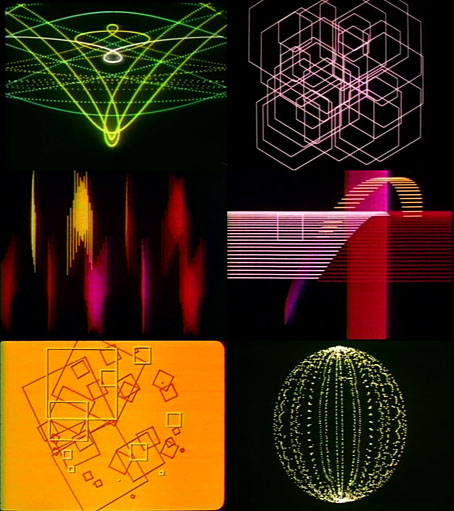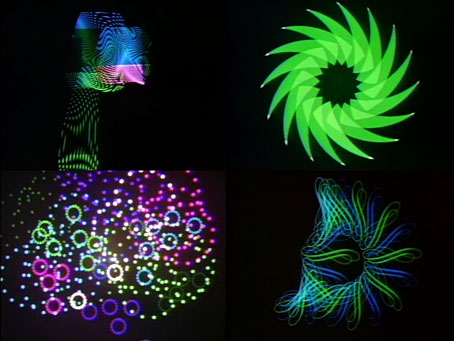John Whitney’s abstract films haven’t always been easy to see on YouTube, and when they do turn up they’re often poor quality, so this was a welcome discovery, a 38-minute compilation of Whitney shorts taken from a Japanese laserdisc. A couple of the items mentioned in the on-screen contents list are absent from the video. The actual contents are as follows:
• Arabesque (1976)
• Matrix III (1972)
• Matrix I (1971)
• Permutation (1968)
• Catalog (1961)
Catalog is a showreel of Whitney’s earliest film experiments, a compilation within the compilation. Many of Whitney’s films are among the earliest examples of computer animation, made in the days when creating any kind of computer graphics meant laboriously plotting co-ordinates into a program which would then be fed into a machine the size of a wardrobe; the resulting video output was captured on film by a camera pointed at a monitor, a process you can see in operation in a short demonstration of Whitney’s working methods, Experiments in Motion Graphics (1967). Colour overlays and superimposition transform these simple cathode-ray shapes into things of beauty, with Whitney’s soundtracks being the icing on the cake: Arabesque is accompanied by the santur playing of Manoochehr Sadeghi, while Matrix III features an extract from Terry Riley’s Poppy Nogood And The Phantom Band.
Elsewhere on { feuilleton }
• The abstract cinema archive


